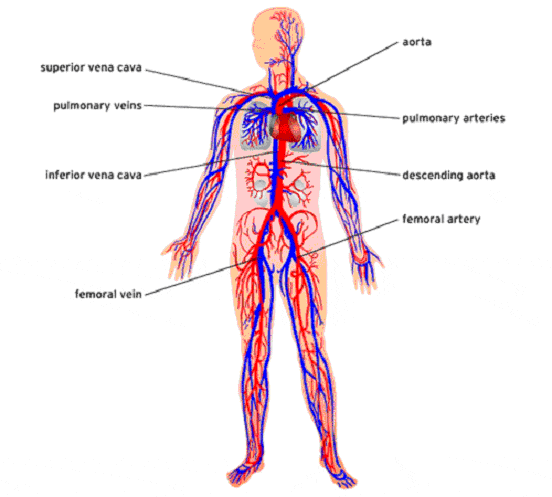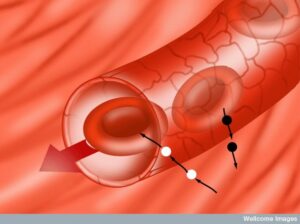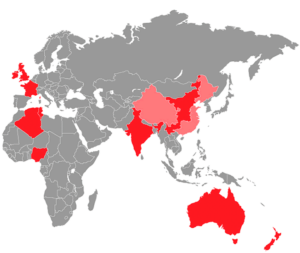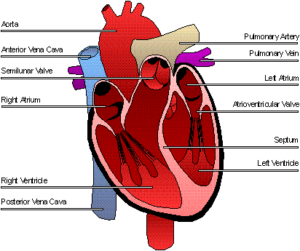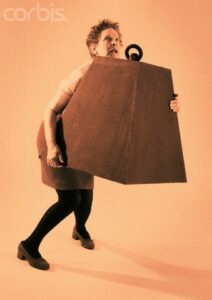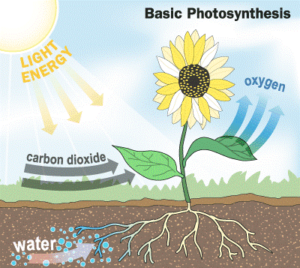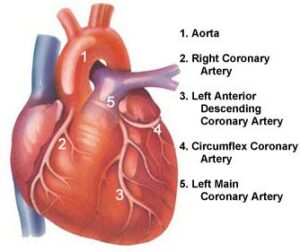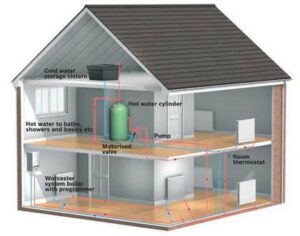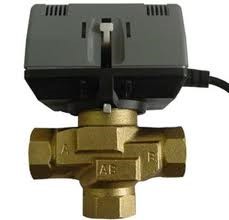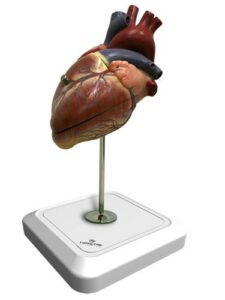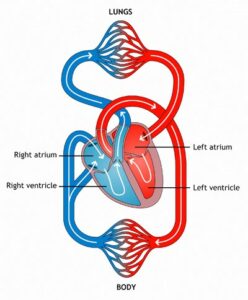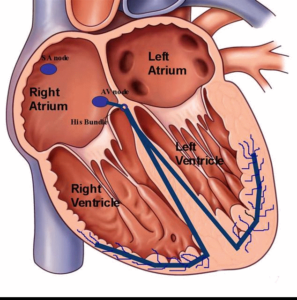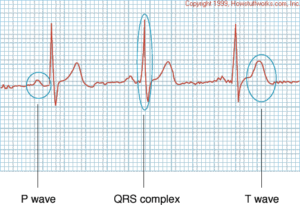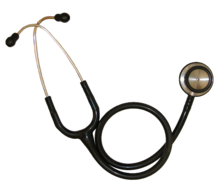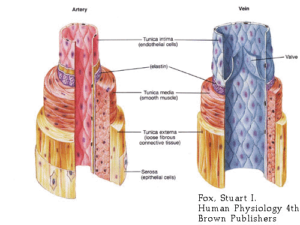The Miracle of the Circulatory System
By Dr Richard Kent MB BS
Website www.freechristianteaching.tv
Email: drrichardkent.org
The purpose of this teaching is to show you, in a simple way that you can understand, the mind-blowing intelligence the creator of the universe. His name is Jesus Christ.
When you read this teaching hopefully your mind will be expanded to realise the awesome intelligence behind all of creation.
Today we are studying the human Circulatory System.
The Miraculous Circulatory System
Leviticus 17:14
“The life of every creature is its blood”
Blood is essential for all life.
Function of blood
Image 1- human circulatory system
- Blood is a liquid organ.
- The total length of your circulatory system stretches an amazing 60,000 miles. That is more than twice the distance around the earth.
- The average adult has 10 pints of blood in his or her body.
Red blood cells
Image 2- red blood cells
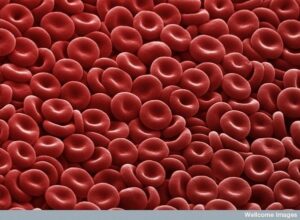
- We give birth to 100 billion red blood cells every day and about two million red blood cells every second.
Image 3- red blood cells in capillaries
- Capillaries are so small that red blood cells can only travel through them in single file.
The Aorta
Image 4- the aorta
- The aorta, the largest artery in the body, is almost the diameter of a garden hose.
- Capillaries, on the other hand, are so small that it takes ten of them to equal the thickness of a human hair.
- These 10 pints of blood circulates through the body three times every minute.
Image 5- London to New Zealand
- In one day, the blood travels a total of 12,000 miles
- That’s the same distance as for London to New Zealand!
Image 6- the human heart
- Your heart beats about 100,000 times in one day and about 40,000,000 times a year.
Image 7- one ton
- In one hour, the heart works hard enough to produce enough energy to raise almost one ton of weight one yard from the ground.
- The heart beats around 3 billion times in the average person’s life.
- About 2 million blood cells die in the human body every second, and the same number are born each second.
Image 8- a droplet of blood
- Within a tiny droplet of blood, there are some 5 million red blood cells, 300,000 platelets and 10,000 white cells.
- It takes about one minute for a red blood cell to circle the whole body.
- Red blood cells make approximately 250,000 round trips of the body before returning to the bone marrow, where they were born, to die.
- Red blood cells may live for about 4 months circulating throughout the body, feeding the 100 trillion other body cells.
The circulatory system performs many different functions just below the skin.
- Carries oxygen to all of the cells that compose the body, of which you have 100 trillion!
- Delivers nutrients, such an oxygen and glucose, which the body uses to produce heat and energy.
- Acts as a delivery system for hormones, carrying these biological compounds to specific target organs.
- Collecting metabolic waste and delivering it to excretory organs.
- Pays a critical protective role by combating infections
- Helps establish an immune system defence
The Krebs Cycle
Image 9- the Krebs cycle
Within each cell oxygen and glucose is metabolised in the Krebs Cycle into energy.
This is a complicated cycle which I will discuss in another programme.
Basically, ADP is converted into ATP, which are high energy molecules.
ATP transports chemical energy within cells for metabolism.
It is one of the end products of photophosphorylation in plants and cellular respiration in all living bodies.
ATP is used by enzymes and structural proteins in all cellular processes.
The blood transports glucose and oxygen to the cells in order to provide the energy for the Krebs Cycle.
One of the byproducts of the Krebs Cycle is Carbon Dioxide, and the blood removes this toxic waste to the lungs, where Carbon Dioxide is breathed out into the atmosphere, and it is breathed in by all the plants!
Image 10 – photosynthesis
In a separate teaching I have described photosynthesis in great detail.
It is truly miraculous.
All living plants contain DNA, proving that they are miraculously designed by God Himself.
All living plants and algae in the sea convert Carbon Dioxide and water into Oxygen and food, which is essential for life.
In order for the reaction to proceed, sunlight is necessary as a catalyst for the chemical process.
Quite simply, the blood carries Oxygen and Glucose to the cells in the body to create energy in the mitochondria.
This happens during the Krebs Cycle.
Carbon Dioxide is a toxic waste product which the blood collects and transports to the lungs, where the carbon dioxide is excreted in our breath, ready for the plants to convert back into oxygen and food!
This is yet another example of irreducible complexity!
Living beings could not exist without the plants, and the plants could not exist without living beings!
Both are incredibly complex, and both are designed using DNA which is the most complex genetic code in the universe!
In order for photosynthesis to proceed sunlight is necessary which comes from the sun, 93,000,000 miles away!
Sunlight is actually packets of photons, which are sub atomic particles released during nuclear fusion, which only takes place in the sun.
Nuclear fusion is in itself incredibly complex and cannot be replicated by human beings, and is one further example of irreducible complexity!
I have made a further program on the sun and nuclear fusion.
Transport of oxygen and glucose, and many other nutrients to all of your 100 trillion cells in your body
Image 11 – human organs

Every organ in the body requires oxygen requires oxygen and glucose.
Obviously, the heart itself requires oxygen and glucose and this is provided by the coronary arteries.
Image 12- the coronary arteries
The heart is basically a very complicated pump
The heart serves as a “pump” to deliver blood throughout the body.
Before looking at the heart, let us look at a simple pump which we are all familiar with.
13- A typical house central heating system
14 – A typical central heating pump
Image 15 – A typical motorised valve
Simple question!
If you employed a builder to build a house for you, how likely do you think it would be for the entire central heating system to magically evolve by chance, including the boiler, the pump, the motorised valve, the radiators, the cistern in the loft, and the thermostat?
I think the answer to that is very clear!
In fact, the human circulatory system, the heart and the valves are vastly more complicated than the central heating system in your house!
In addition, my personal experience with central heating systems has been that they break down frequently, and are very expensive to repair!
Unlike central heating systems the human heart hardly ever goes wrong!
The well-designed anatomy of the human heart
Image 16- The human heart
- The heart has three layers.
- The smooth, inside lining of the heart is called the endocardium.
- The middle layer of heart muscle is called the myocardium.
- It is surrounded by a fluid filled sac call the pericardium.
- When a human is at rest, the heart propels about five litres of blood through the body each minute.
- In order to carry out all of its complex functions, the circulatory system relies on an estimated 60,000 miles of vessels.
- The “pump” or heart, is roughly the size of a clenched fist and averages only 320 grams in men and 250 grams in women.
- It has been estimated that, in one year, the heart contracts some 42 million times and ejects 700,000 gallons of blood.
- Humans possess a four-chambered heart that acts as a double-cyclic pump
Heart and lungs
Image 17- heart and lungs
There are four chambers in the heart
The left atria and left ventricle are responsible for pumping oxygenated blood throughout the body.
The right atria and right ventricle pump de-oxygenated blood to the lungs.
This is called a “double” circulatory system, because there are two separate but connected circulations:
- The pulmonary circulatory system, which carries deoxygenated blood to the lungs, where it releases Carbon Dioxide and uptakes Oxygen from the air.
- The systemic circulatory system, system supplies the body with oxygenated blood and nutrients, and carries away waste and carbon dioxide.
This is an irreducibly complex problem for evolutionist!
In order for the circulatory system to function properly, at least five things must be present:
(1) Lungs that can enrich the blood with oxygen;
(2) Haemoglobin to bind the oxygen;
(3) Red blood cells to carry the haemoglobin to cells throughout the body;
(4) Blood vessels to transport the red blood cells; and
(5) A Heart that can pump oxygenated material throughout the body, and de-oxygenated blood to the lungs!
The whole system would fail completely if any one of these components are absent!
This is a very good example of irreducible complexity!
Electrical conduction
18- Bundle of His
Schematic representation of the atrio-ventricular bundle of His.
The electrical impulses originate in the SA node, and then travel throughout the whole heart down the bundle of His.
The electrical impulse originates at the Sinu-Atrial node, and travels to the AV node.
The bundle of His, is a collection of heart muscle cells which is highly specialized for electrical conduction.
The electrical impulse then travels from the AV node down into the bundle of His, which passes into the ventricular septum.
The electrical impulse then divides into the left and right bundles, also called Purkinje fibres.
These electrical impulses cause the atria and the ventricles to contract at a regular interval, which may be observed on an ECG.
Here is an example of three heartbeats from an ECG
19- ECG
- P wave – coincides with the spread of electrical activity over the atria and the beginning of its contraction.
- QRS complex – coincides with the spread of electrical activity over the ventricles and the beginning of its contraction
- T wave – coincides with the recovery phase of the ventricles.
Heart Sounds
20 – stethoscope
When someone listens to your heart with a stethoscope the sound is often described as “lub-dub, lub-dub”
The first heart sound (lub) is caused by the acceleration and deceleration of blood and a vibration of the heart at the time of the closure of the tricuspid and mitral valves.
The second heart sound (dub) is caused by the same acceleration and deceleration of blood and vibrations at the time of closure of the pulmonic and aortic valves.
The Vascular system—Blood vessels
21- Arteries and veins
Arteries
There are three types of arteries which carry blood away from the heart:
- Arterioles are the smallest with a narrow lumen, and they possess thick muscular walls.
- Muscular arteries are chiefly responsible for distributing oxygenated blood to various parts of the body. The walls of these vessels are primarily composed of smooth muscle which allows the arteries to contract, constricting blood flow to certain areas (e.g., dilating vessels to the digestive system and constricting vessels to the extremities following a big meal).
- Elastic arteries are the largest types of arteries in the body, and their walls consist of elastin, which helps prevent distal shear stress and prevents damage as blood under high pressure is forced out of the heart
Veins
Veins, on the other hand, take blood from the capillary beds and return it to the heart.
Small veins are often referred to as venules.
Veins do not possess strong muscular walls, but instead have been designed with a valve system that prevents the backflow of blood.
Capillaries
Capillaries can be described as tiny vessels that connect arteries and veins. It is here that we find the complex exchange of blood gases and dissolved molecules. Arteries deliver blood to literally billions of capillaries, which provide a total surface area of 1,000 square miles
Regulation of red blood cell formation
The production of red blood cells is regulated by
- Hormone called erythropoietin
- Low oxygen levels.
Any factor that decreases the oxygen level in the body increases the level of erythropoietin in the body.
Erythropoietin then stimulates production of Red Blood Cells by stimulating the stem cells to produce more Red Blood Cells and increasing how quickly they mature.
Ninety percent of erythropoietin is made in the kidneys.
Practical consideration for evolutionists!
The production of red blood cells is regulated by erythropoietin—a hormone produced in the kidney.
Yet that kidney requires red blood cells to deliver oxygenated blood.
So, which evolved first?
Both are highly complex, and could not possibly have evolved simultaneously!
The production of red blood cells was planned and engineered by a supreme intelligence. His name is Jesus Christ!
The human circulatory system is tremendous evidence of the existence of God.
What does the Bible say about our heart?
Although we have a mechanical heart, which we have been looking at, the Bible also describes our heart as the centre of our human spiritual activity.
- Matthew 22:37
‘You shall love the Lord your God with all your heart, with all your soul, and with all your mind.’
The Greek word here is kardi/a (Strongs ref 2588)
We can get a feeling of what this word really means by seeing where else Jesus used it in the New Testament:
Image 22 – Jesus Teaching
- Matthew 5:8
Blessed are the pure in heart,
For they shall see God.
- Matthew 5:28
Whoever looks at a woman to lust for her has already committed adultery with her in his heart.
- Matthew 6:21
For where your treasure is, there your heart will be also.
- Matthew 12:35
A good man out of the good treasure of his heart brings forth good things
- Matthew 18:35
If each of you, from his heart, does not forgive his brother his trespasses.
- Mark 7:6
This people honour me with their lips,
But their heart is far from me.
- Mark 11:23
….and does not doubt in his heart, but believes that those things he says will be done, he will have whatever he says.
It is important to look after our physical heart and our spiritual heart:
Image 23 – Our life
- Proverbs 4:23
Guard your heart above all else, for it determines the course of your life.
I hope you have enjoyed this teaching and associated YouTube videos
God bless you!
Richard
Dr Richard Kent
If you have any comments or questions, please send an e-mail to: [email protected]
